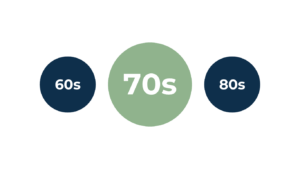
Milestone Ages – 66 and 67
Age Based PlanningNov 13, 2024
The milestone associated with these ages depends on when you were born. If you were born between 1943 and 1954, then your full retirement age (FRA) for Social Security is 66. 2020 was the last year of full eligibility at age 66. If you were born between 1955 and 1959, 2 months gets added to your eligibility each year. For example, if you were born in 1955, your FRA is 66 and 2 months. If you were born in 1956, it would be 66 and 4 months. It goes on up to 1959. If you were born in 1960 or later, your FRA is 67.
You can start your social security at a discounted rate as early as age 62 no matter what year you were born. There are income limits associated with taking it early that will probably discourage you from doing it if you are still working. Once you reach your FRA, you no longer have to worry about those income limits. However, you do still have to worry about how your income affects the taxation of your Social Security. In addition to your earned income, retirement distributions, pension income, dividends and interest including tax free interest all have an impact on the taxability of your Social Security. This should be considered when you are planning your retirement withdrawals from your assets.
The last thing for you to understand is that you don’t have to take your Social Security at your FRA. If you are working and don’t need the money, you can make a strong argument to continue to defer your Social Security. Of course, there are other factors, which is why you should consult a professional before making that decision. For every year you defer up to age 70, your benefit is increased by 8% at monthly rate of 2/3 of 1%*. This means that you can start it whenever you want between your FRA and age 70 at a higher rate that is growing monthly. It is worth noting that increases stop age 70 so there is no benefit to deferring past that age.
We ran a couple of hypothetical examples and the breakeven age came out to age 82.5 no matter what ages we started taking the increased benefit. There is more that goes into the breakeven, however. For example, if you are the primary wage earner, deferring can potentially increase spousal benefits as well. This may continue to benefit your spouse even after you pass away. Another consideration is taking your Social Security and investing it if you don’t need it yet.
As you can see, deferring Social Security beyond your FRA may be a more complex decision than one might think. Taxes, family situation, employment status and the breakdown of your retirement assets should all be considered in your decision. Take the time to review all of these factors and get a plan in place so you can make the best possible decision for you and your family.
*www.ssa.gov


